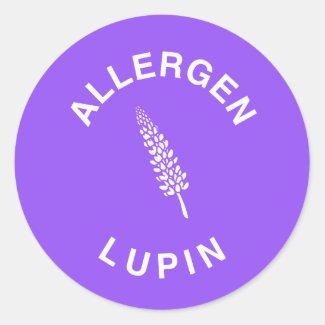Lupine Allergy: Lesser-Known Yet Equally Dangerous
Lupine, one of the 14 major allergens, often flies under the radar. However, its prevalence is rising due to its economic viability and nutritional benefits. As a rich source of fatty acids, proteins, and dietary fiber, lupine has gained traction in the food industry. Notably, it’s increasingly used as a meat substitute because its protein profile contains all the essential amino acids found in meat.
What Is Lupine?
Lupine, also known as ‘bean flour,’ belongs to the legume family. You’ll find it in various food products, including:
- Breads, Pastries, and Cakes
- Breaded Products
- Sauces, Vinaigrettes, and Soups
- Snacks, Sweets, and Chocolate
- Meat Substitutes for Vegetarians
- Cold Cuts
The Allergic Connection
Approximately 40% of individuals with a peanut allergy also exhibit an allergic response to lupine. Cross-reactivity between these two allergens, as well as other legumes, is common. Unfortunately, there’s no precise estimate of the total number of lupine-allergic individuals, but intolerance to this allergen is on the rise.
Symptoms of Lupine Allergy
Lupines, with their beautiful blooms, might seem harmless. However, for individuals with lupin allergy, these seemingly innocent plants can trigger a range of unpleasant and even life-threatening symptoms. Understanding these symptoms is crucial for early identification and proper management.
When the Body Says No to Lupin:
If you have a lupin allergy, your body's immune system mistakenly identifies lupine proteins as harmful invaders. This triggers an inflammatory response, leading to various symptoms:
1. Respiratory Distress:
- Acute Asthma: This can cause sudden wheezing, chest tightness, coughing, and difficulty breathing. Imagine air struggling to get through your airways, making it hard to breathe.
- Choking: In severe cases, swelling in the throat can obstruct breathing, leading to choking. This is a medical emergency, and immediate attention is crucial.
2. Skin Reactions:
- Rash: Red, itchy, and raised bumps on the skin, often appearing quickly after exposure. Think of mosquito bites multiplied all over your body, but much itchier.
- Itchy Mouth: Tingling and itching sensation in the mouth and throat, making it uncomfortable to eat or speak.
- Hives: Large, raised, and itchy welts that may appear anywhere on the body. Imagine large, angry bumps forming on your skin, causing constant itching.
3. Edema (Swelling):
Fluid buildup in various tissues can cause:
- Facial swelling: Puffiness in the face, lips, and around the eyes, making your face feel swollen and uncomfortable.
- Angioedema: Swelling deeper in the skin, causing a doughy feeling and potentially affecting the airways, leading to difficulty breathing.
4. Anaphylaxis:
This is the most severe reaction, requiring immediate medical attention. It can cause:
- Signs and symptoms listed above
- Sudden and severe drop in blood pressure
- Lightheadedness or fainting
- Nausea and vomiting
- Rapid pulse
Remember, if you experience any of these symptoms after lupine exposure, especially difficulty breathing, seek immediate medical attention.
By understanding these symptoms, individuals with lupin allergy can be better prepared to identify and manage potential reactions.
Identifying Lupine in Food Products
Recognizing lupine isn’t always straightforward, but it’s crucial for those with allergies. Look out for the following terms on ingredient labels:
- Protein Concentrate
- Lupinus
- Loyu
- Lupini/Tremocos
- Lupine
- Lupine Flour
- Lupine Bean
- Lupine Pieces
- Lupine Seeds
- Okara
- Dietary Fiber
When preparing meals for someone allergic to lupine, be vigilant about its presence. Common products that may contain lupine include:
- Pastries and Cakes
- Waffles
- Pancakes
- Pastas
- Pizzas
- Meat Alternatives for Vegetarians
Read also: Xolair: New Hope for Food Allergies
Remember, even though lupine is lesser-known, its impact can be just as severe. Proper awareness and labeling are essential for the safety of those with lupine allergies.








